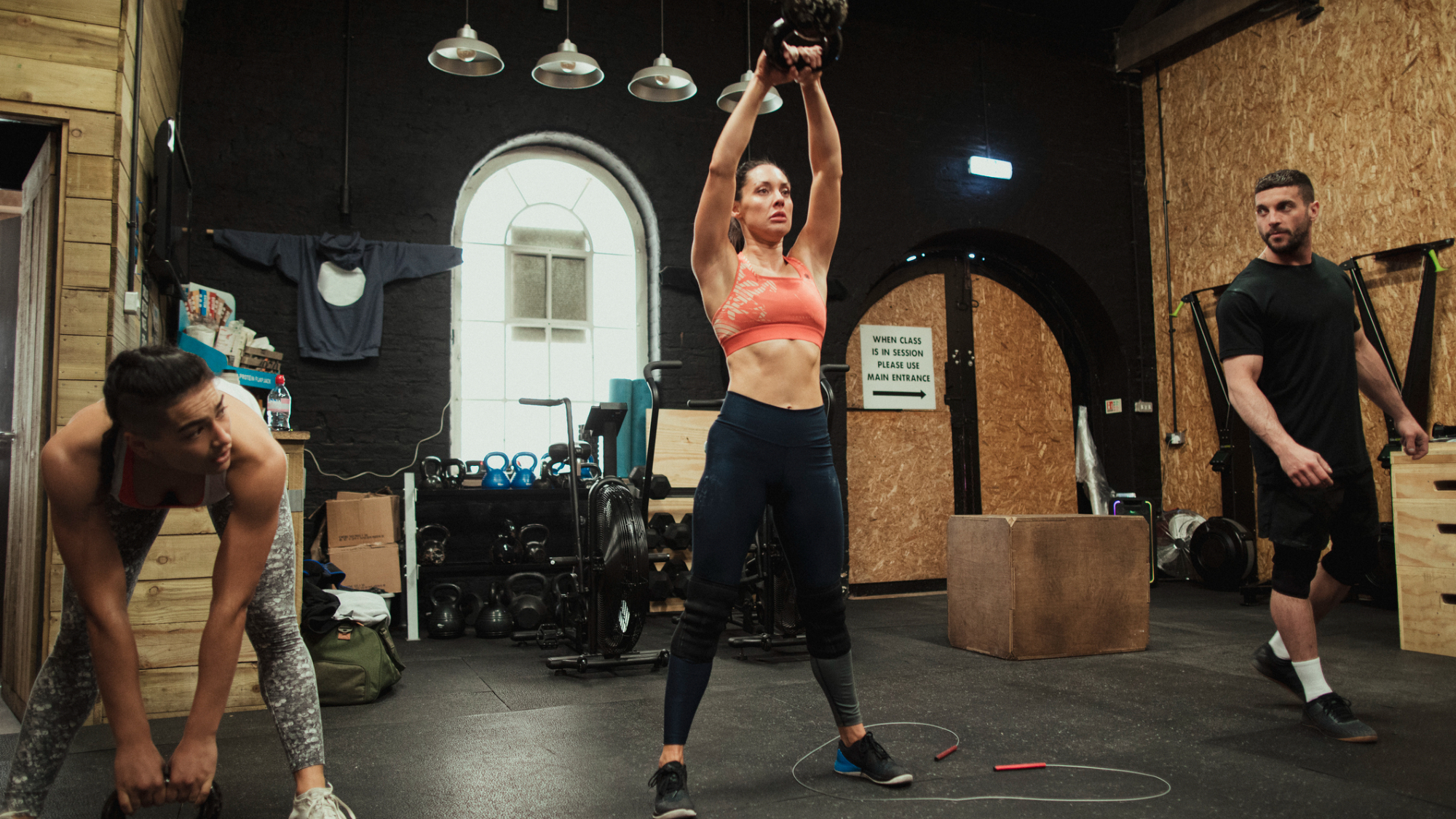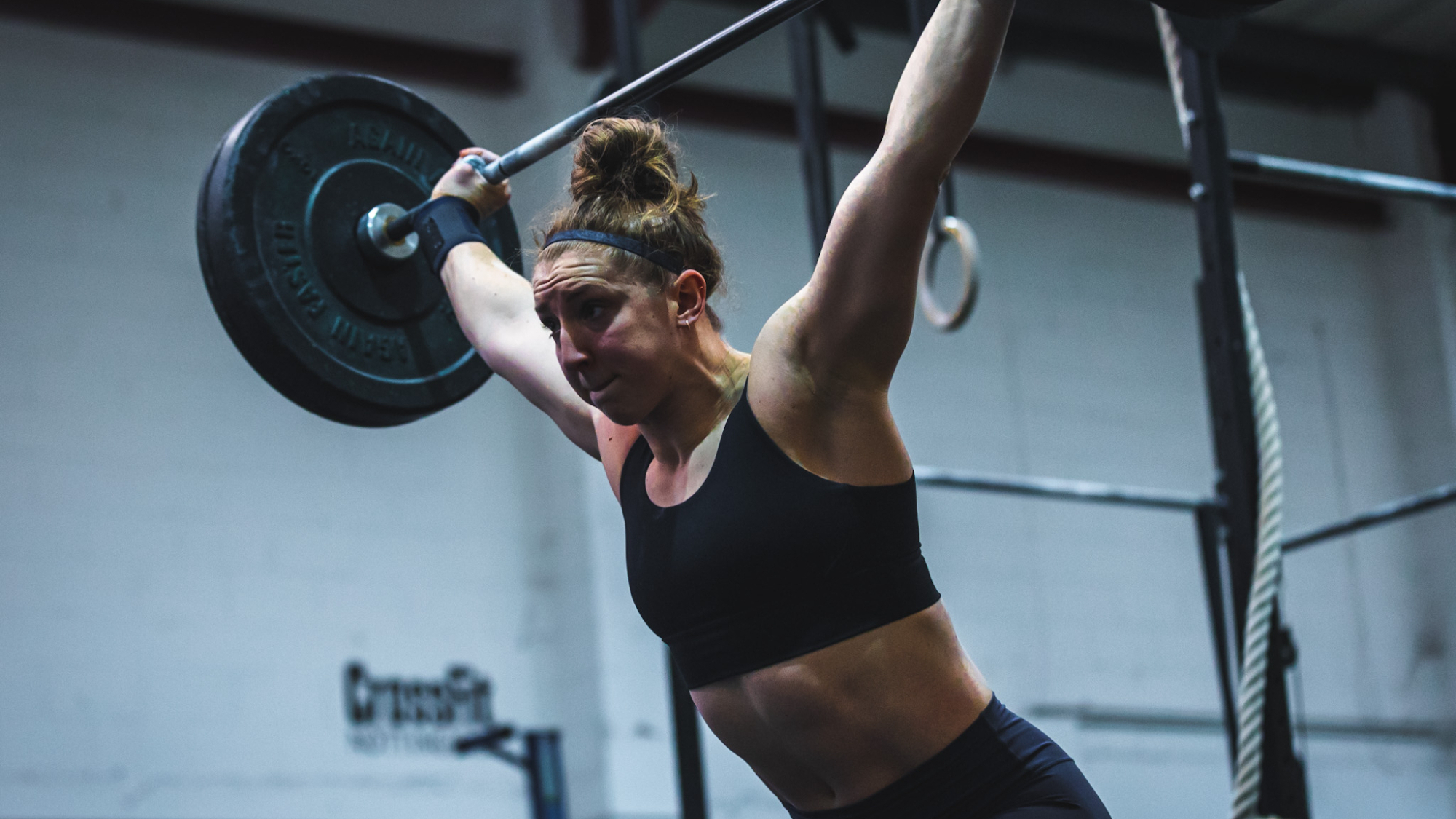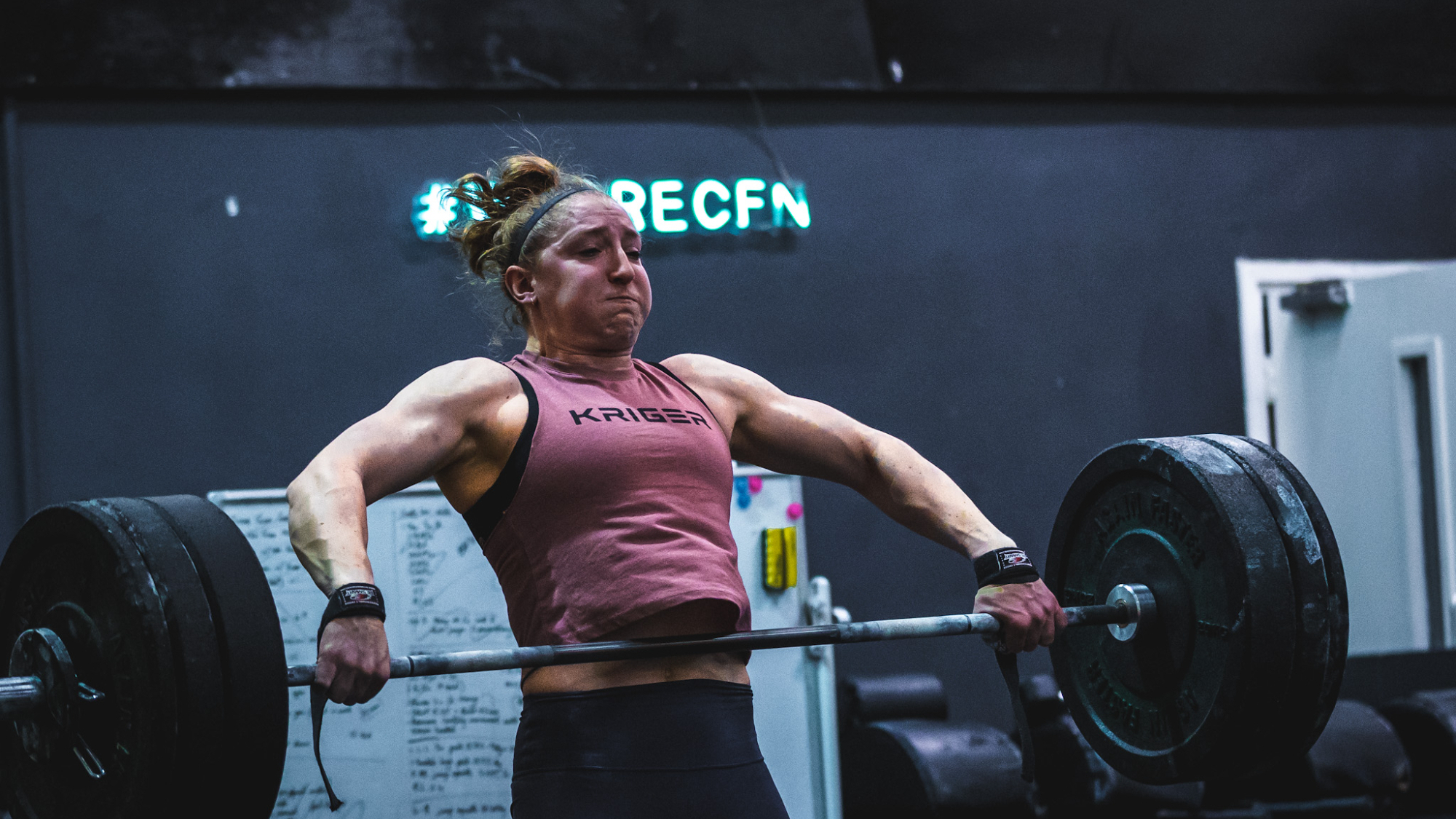
The first confirmed event of the 2023 CrossFit Games will see the sport return to its roots with a benchmark test: the Helen CrossFit workout.
One of the sport’s famed (and feared) “girls workouts”, Helen challenges athletes to complete three rounds of running, American kettlebell swings and pull-ups as quickly as possible.
However, elite athletes might not tackle these exact movements in Madison this summer. A statement from CrossFit reads “all individual, age-group and adaptive athletes will do a version of the benchmark workout, Helen, at the 2023 NOBULL CrossFit Games”.
To help you put your fitness to the test like the pros, we’ve spoken to CrossFit coach and UK’s fittest woman 2022 Lucy Campbell for some top tips on tackling this workout.
Scroll down to find out how to slash seconds off your time, as well as Campbell’s predictions on how CrossFit could change this workout to challenge the crème de la crème of the functional fitness world.
How To Do The Helen CrossFit WOD
Perform three rounds for time of:
- 400m run
- 21 American kettlebell swings (53lb/24kg for men, 35lb/16kg for women)
- 12 pull-ups
Helen CrossFit WOD Scaling Options
This is a fast-paced workout, so if one or more of the moves are seriously slowing you down then you might consider making some changes. Luckily, Campbell has plenty of options to adjust this test accordingly.
“If we’re looking at preserving the stimulus, it’s all about scaling your most challenging movement. So for a lot of people that would be the pull-ups,” says Campbell.
Experienced athletes will use kipping pull-ups or butterfly pull-ups to perform all 12 unbroken, but if you’re not familiar with these movements Campbell suggests swapping them for something like ring rows or banded pull-ups.
“You can obviously do strict pull-ups too, although to keep the stimulus you would probably look at reducing the reps because you wouldn’t want them to slow you down too much over the course of the three rounds.

“But you wouldn’t want fewer than eight reps because you still want some grip element in there, going from the kettlebell swings into the pull-ups.”
Campbell says you can choose lighter kettlebells too, if you can’t perform 21 nonstop swings at the prescribed RX weight.
“If you are someone who really struggles with running then take the run distance down to something you can hold a good pace for,” she adds.
“For most people the run is going to offer an element of recovery. But we don’t want it to be so slow or so long that it takes away the intended stimulus, which is a fairly fast cardiovascular-dominant workout.”
How To Get A Faster Time
We’ve all been there on a three-round workout: You come out the gate like you’ve been shot out of a cannon before falling off the pace and crawling across the finish line.
That’s why Campbell says the secret to a good Helen time is strategic pacing.
“I think the mistake a lot of people make is pushing when it feels great, which is usually in the first round, and then suffering the consequences because they can’t hold that pace for the rest of it.
“If you run a bit too fast on the first couple of rounds then, even though you should be able to do the moves unbroken, you just don’t have the cardiovascular capacity left because you’ve just pushed a little bit too hard.”
To counter this, Campbell advises starting conservatively and then attempting to increase your pace as you progress through the workout.
“In my head I would always think about trying to build the pace through the runs. The likelihood is, even if you’re trying to build the pace, you’ll probably end up staying at the same speed. It’s just the effort level to keep that pace gets harder.

“But having that mentality of trying to improve your split time for each round means it forces you to hold back a little bit when you feel good. Then, because you’re trying to push more at the end, you won’t slow down as much as you normally would if you reversed that and pushed too hard at the start.”
She also recommends having a “potentially harsh” conversation with yourself about your fitness and capabilities before you start.
This not only applies to pacing the workout, but also breaking up the American kettlebell swings and pull-ups.
“If you’re someone who doesn’t necessarily have three rounds of 12 unbroken pull-ups, with the grip fatigue and the cardiovascular fatigue of this workout, then break the sets up before you need to break them up,” says Campbell.
“That usually means the rest periods you take between the sets will be shorter. It might be that you don’t need to break the first round, but you still do two lots of six or a seven and a five, and do the same in the second round with a short break.
“That just keeps that last set faster, rather than there being long breaks between three sets.”
What Is A Good Time For The Helen CrossFit WOD?
I put this to Campbell, who quickly went into math mode. “Twenty-one swings, let’s say two seconds per rep, so 42 seconds there, then for the 400m run let’s say 90 seconds at the slowest…” she began.
“I think that’s a nine-minute workout, or sub-nine-minutes for real elites. Add on a couple of minutes for intermediates, so sub-12, let’s say, then maybe sub-15 minutes for beginners.”
However, she reiterates that the intended stimulus of this workout is a fast, cardiovascular-dominant circuit that tests your grip strength.
“I think, regardless of your ability level, if you’re scaling it properly it should probably be around the 10- to 12-minute mark.”
What Version Of Helen Will CrossFit Games Athletes Face?
CrossFit Games athletes will face “a version of” Helen at the 2023 event, but what does that mean?
The only time a version of Helen has shown up at the Games before is in 2010. It stuck to the same movements and structure, and the third round looked identical. However, the reps and distances were doubled in the second round, and tripled in the first.
There was a 22-minute time -cap, and once they had finished that element, athletes had 90 seconds to establish a one-rep max shoulder-to-overhead lift—moving a barbell from a front rack position to overhead using a strict press, push press or jerk.
CrossFit could repeat this test to measure the progress of the sport since 2010, since being “measurable” is one of the key principles behind the CrossFit method, after all. Or a whole new twist could await the athletes.
“Part of me hopes they will change the kettlebell movement to a double kettlebell hang snatch or something like that, with a slightly clearer movement standard,” says Campbell. This will make for easier judging, because American kettlebell swing form can vary widely.
“They could also increase the weight on the kettlebell, but I don’t really want to see kettlebell swings.”
She suggests the pull-ups could be upgraded for trickier variations such as chest-to-bar pull-ups or muscle-ups “like they did at the 2022 Games with the Jackie Pro event” (which Campbell won, though she fails to mention this).
“I do think they’ll try to increase the complexity because I don’t think the workout on its own is a big enough differentiator for Games athletes,” she says. “It would basically just become a running workout, because everything else would be done unbroken and pretty quickly.
“They already have a 5km run in there [the second event to be announced for the 2023 Games is a 5km cross-country run] so I would hope that’s not the case.”







